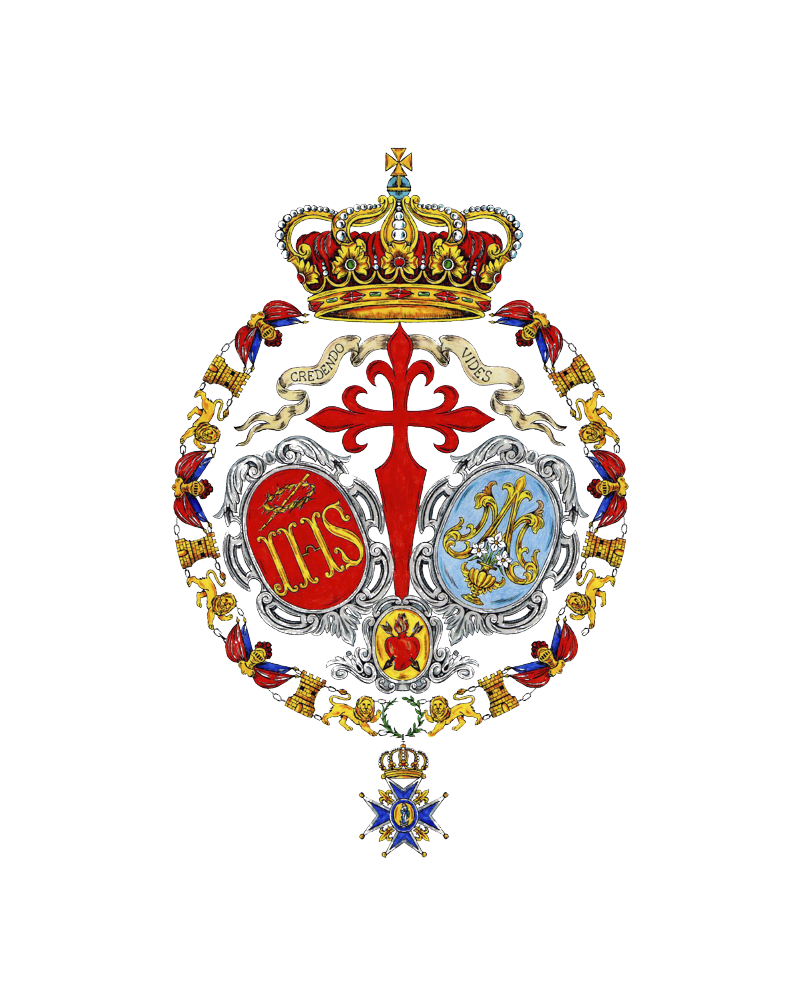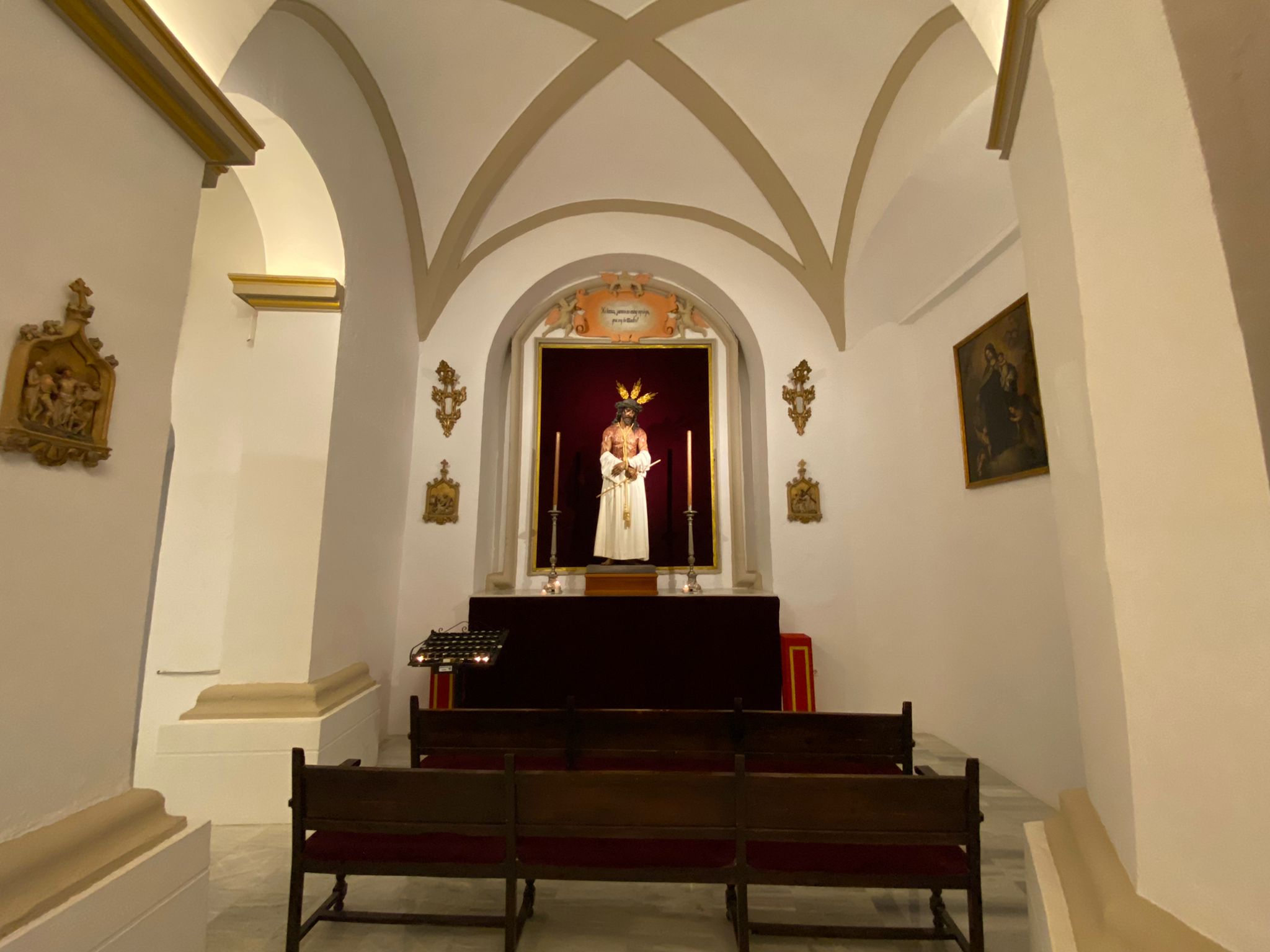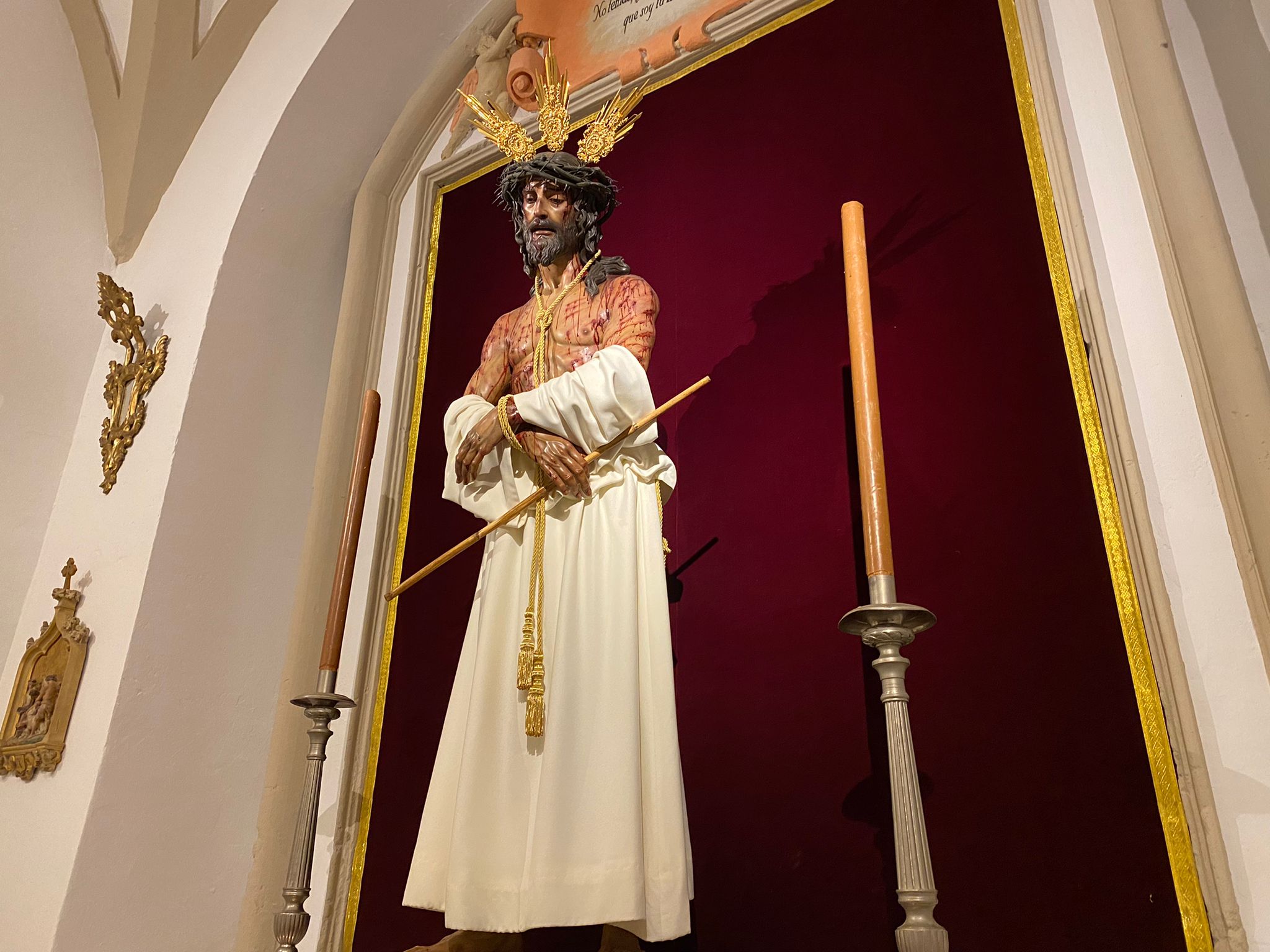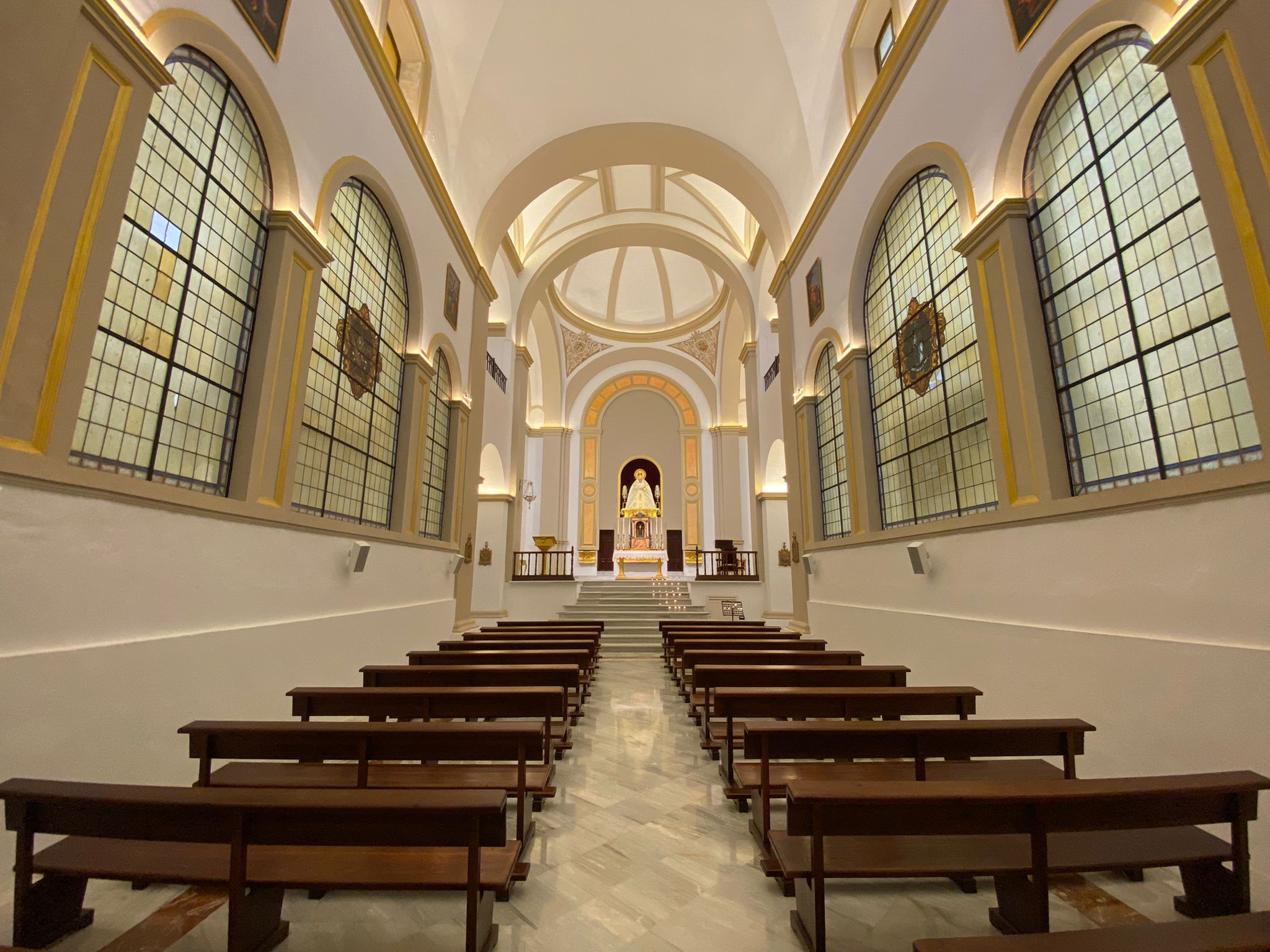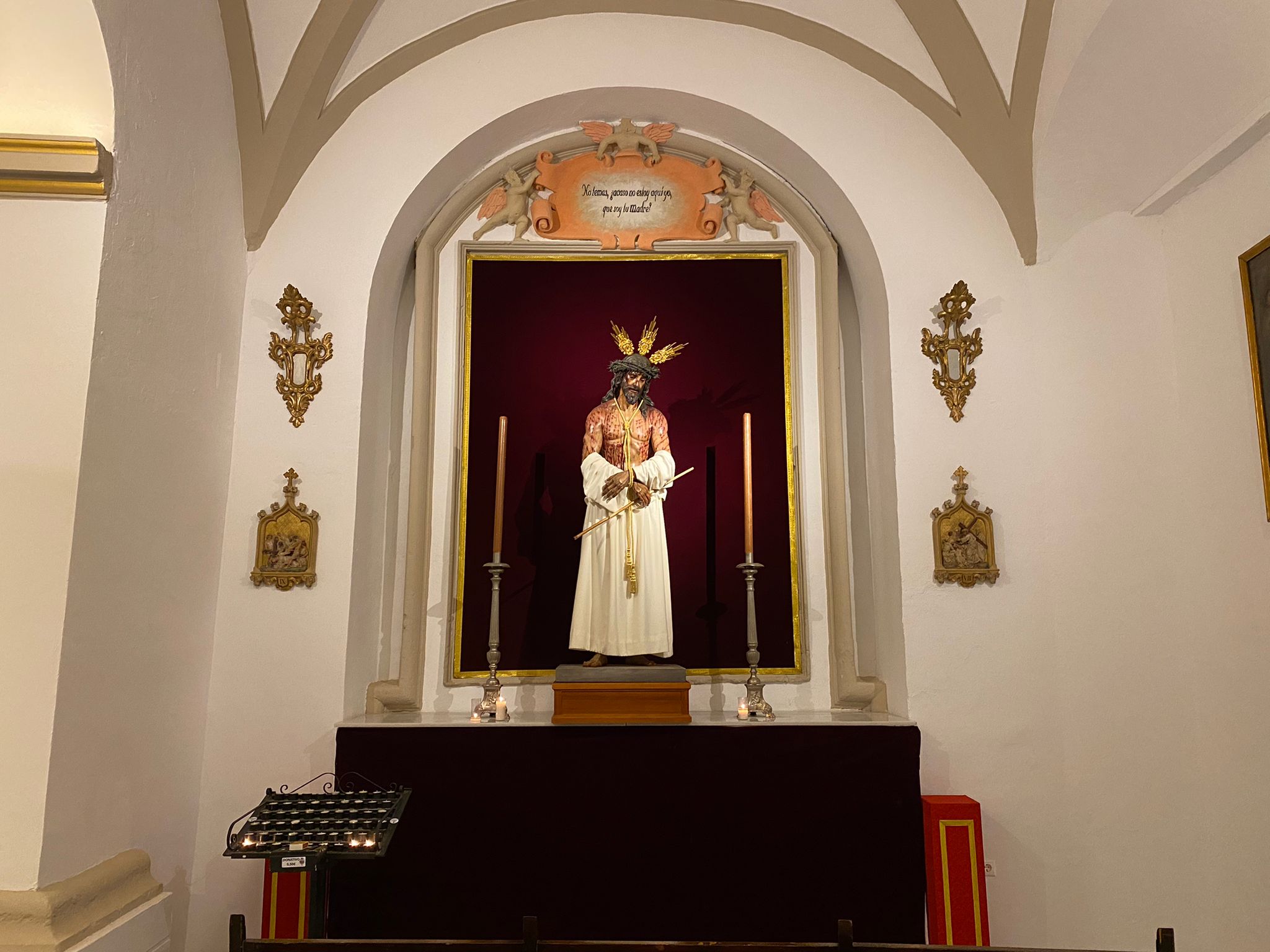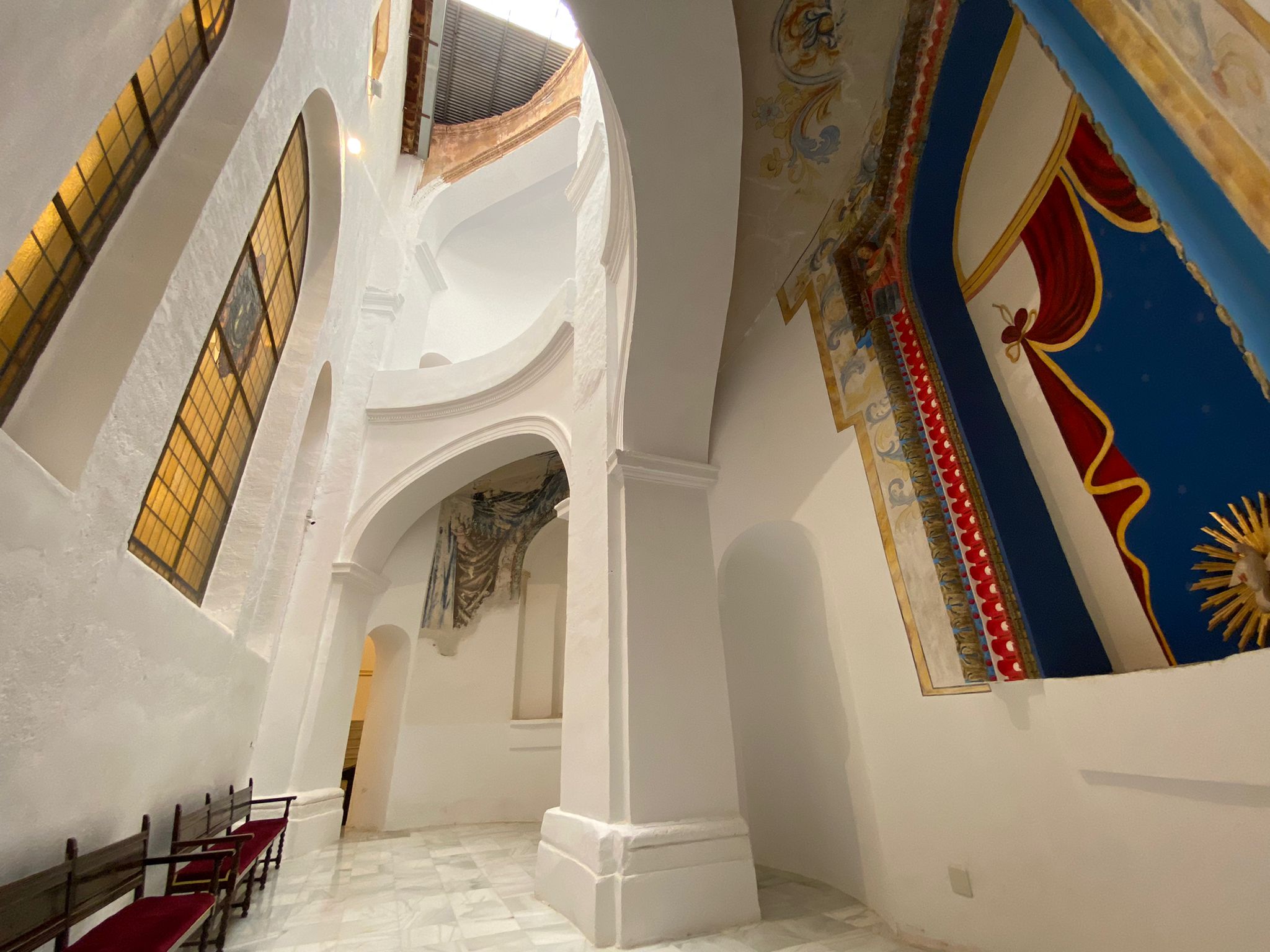We are in the Chapel of Ecce homo, which is framed in plaster work by rectangles as a lintel and jambs where in a perfect baroque style it is crowned with two angels who were beheaded during the Spanish civil war, under the motto with an inscription the gothic letter, “Pater in manustuas commendospiritummeumuna of the seven words that Jesus pronounced on the cross in the form of a prayer to the father, Luke 23 46, and that alluded to a crucified Christ of Saint Augustine who once governed this altarpiece.
We are in front of one of the main chapels, since it supports the image of Christ, holder of the brotherhood that corresponds to the invocation of the Sovereign Power, a work dated in 2009 that came to recover the old invocation of the Holy Christ of the Ecce-Homo or del Praetorium (Jesus leaning out of the window), destroyed in the Spanish civil war, which was made public by Penitence Station on the morning of Good Friday, this dated from the end of the 16th century, belonging to the Brotherhood of the Blessed Sacrament of the parish of Santiago Apostle of the city of Guadix. The style of this sculpture of the Sovereign Power that we are contemplating is of Baroque style, a work in cedar wood of great invoice made by the professor in the specialty of sculpture by the school of fine arts of Seville, Don Juan Manuel Miñarro López, represents through this iconography the moment of the presentation to the people in the gospel of John 19 5, and Jesus came out wearing the crown of thorns and the purple robe and Pilate told him, “ecce homo”, which can be translated “behold the man”.
The great thing about this work is that according to the scientific tests of the shroud of Turin and the holy shroud of Oviedo, we are before the faithful image of the face of Jesus, both in the metric of its forms a man of one meter eighty centimeters and in his visibly corpulent physiognomy, the wounds produced in the flogging using a weapon called farumtasillarum or devil’s claws in which iron balls at the end that tore up to 120 times the prisoner’s skin for more than half an hour, these are applied in a manner rigorous in the sculpture in the same area as if it were a mapping and based on the forensic analysis of the Turin sheet, other shroud stigmata are also collected, such as the wound in the nasal septum and the blow to the right side that the latter that are collected in the gospels in the episode of Jesus before Caiaphas John 18 22.
The sculpture of great drama is shown with great realism thanks to different technical resources such as; half-open mouth, or visible ivory teeth, half-closed and reddened glass eyes, trauma and wounds in relief, which make Jesus of the sovereign power Ecce-homo a powerful image that shakes us and calls us to recollection and recollection. prayer, “the same blood will make atonement for the person”, Hebrews 9 22. This Advocation has its liturgical festivity of Christ the King, when one of the manifestations of the power of God on earth takes place in the praetorium “Then Pilate told him: “Then you are King?” Jesus answered: “Yes, as you say, I am a King. For this I was born and for this I have come into the world: to bear witness to the truth. Everyone who is of the truth listens to my voice.” John 18,37.
The Image of the Sovereign Power performs a penance station at the “Prima Sede Hispania”, the Holy Apostolic Royal Cathedral Church of Guadix every Holy Thursday, the day of fraternal love, under the admirable Neo-baroque passage carved in real cedar wood that is structured in two parts basket and vent have a rich plant decoration, thorns and bunches of grapes alluding to the Eucharistic day in contrast to pomegranates and palms pointing to the resurrection, it supports in its corners 4 angel lamps that allude to those of the master Ruiz del Peral of the Accitana Cathedral. which they carry, the scourges, the column, the holy face, and the title of the INRI Cross, all in a brave game of light and dark where you can see the coats of arms of Guadix, Santiago and San Agustin, Churches linked to the History of the Brotherhood, between cherubs eight brave cartouches are centered staging the seven signs of the power of Jesus that frame four superb chapels with the images of San Juan Ba utista, Santa Maria, Santa María Magdalena, San Pedro and San Pablo, all executed in the Sevillian De Ibañez workshops.
The passage is carried by 45 bearers who carry the scene of the mystery, which rigorously represents in a historical way, Jesus presented to the people by the governor of Judea Pontius Pilate and the quaternia in charge of executing the sentence, headed by the centurion Longinus, two Roman flagellants and tied by a mercenary represented with the most characteristic goatee of the Assyrian enemies of the people of Israel who with a dark look mocks Jesus. “Then the procurator’s soldiers took Jesus to the praetorium
